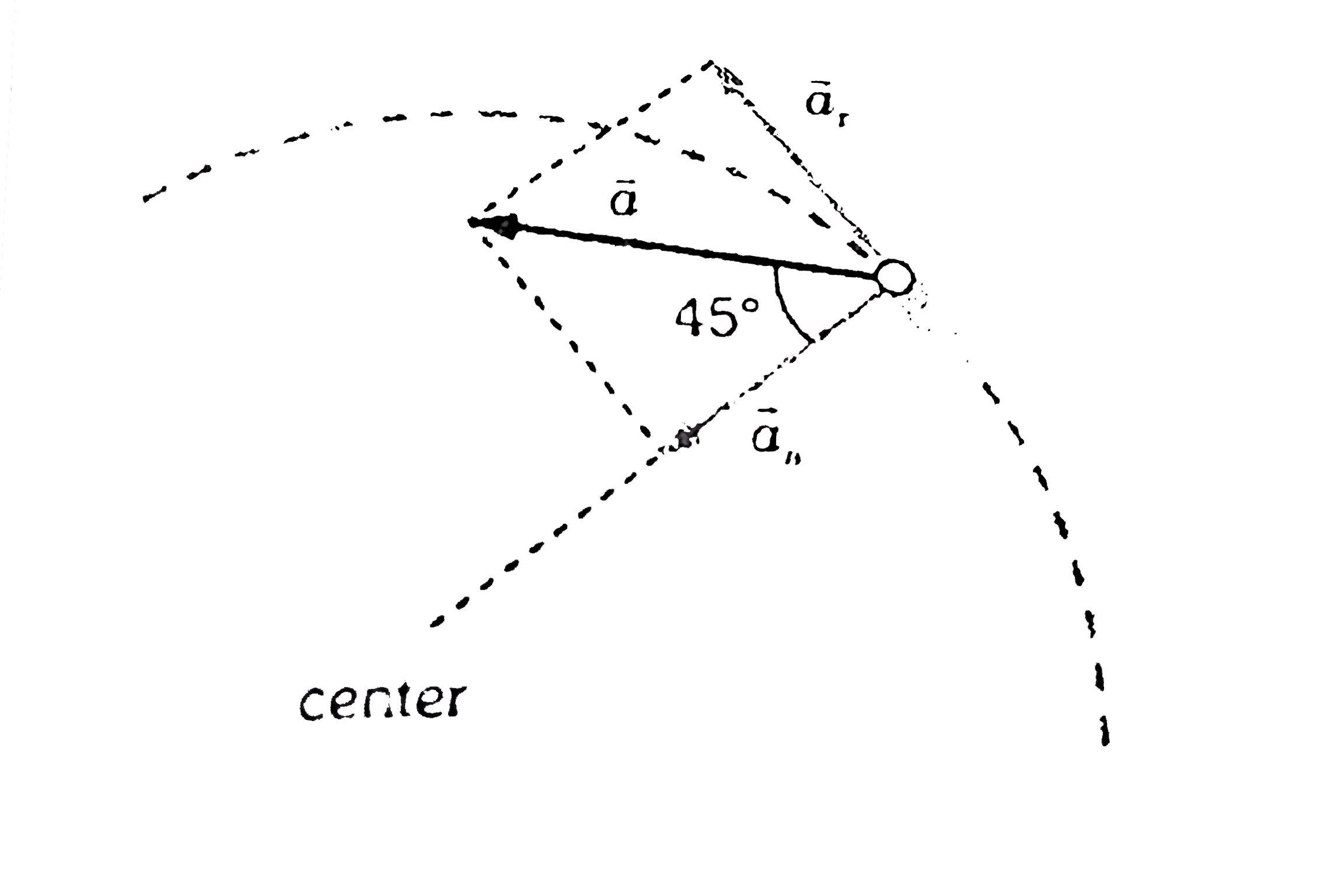A particle is moving in a circular orbit with a constant tangential acceleration. After a certain time t has elapsed after the beginning of motion, the between the total acceleration a and the direction along the radius r becomes equal to 45∘. What is the angular acceleration of the particle.
The correct Answer is:1t2
at=ar,αr=ω2r,α=α2t∘⇒α=1t2
Topper's Solved these Questions
- KINEMATICSBOOK - ALLENCHAPTER - KINEMATICSEXERCISE - Exercise-04[B]
14 Videos
- KINEMATICSBOOK - ALLENCHAPTER - KINEMATICSEXERCISE - Exercise-05 [A]
11 Videos
- KINEMATICSBOOK - ALLENCHAPTER - KINEMATICSEXERCISE - Comprehension#7
3 Videos
- ERROR AND MEASUREMENTBOOK - ALLENCHAPTER - ERROR AND MEASUREMENTEXERCISE - Part-2(Exercise-2)(B)
22 Videos
- KINEMATICS (MOTION ALONG A STRAIGHT LINE AND MOTION IN A PLANE)BOOK - ALLENCHAPTER - KINEMATICS (MOTION ALONG A STRAIGHT LINE AND MOTION IN A PLANE)EXERCISE - BEGINNER S BOX-7
8 Videos
Similar Questions
A particle is moving in a circular orbit when a constant tangential acceleration. After 2s from the beginning of motion, angle between the total acceleration vector and the radius E becomes 45∘. What is the angular acceleration of the particle?

View SolutionA particle is revolving in a circular path of radius 2 m with constant angular speed 4 rad/s. The angular acceleration of particle is
View Solution
Knowledge Check
A particle is moving in circular path with constant acceleration. In time t after the beginning of motion the direction of net acceleration is at 30∘ to the radius vector at that instant. The angular acceleration of the particle at that time t is
A3t2B1t2C√3tD√3t2A point starts from rest and moves along a circular path with a constant tangential acceleration. After one rotation, the ratio of its radial acceleration to its tangential acceleration will be equal to
A1B2πC12πD4πCentripetal acceleration of a particle of mass m moving in a circle of radius r is 4/r2. What is the angular momentum of the particle ?
A4 m/rB4m/√rC2m√rD2 m/r
A particle is moving along a circular path of radius of R such that radial acceleration of particle is proportional to t2 then
View SolutionA particle moves in a circle of radius 2 m at a second
what is its resultant (total ) acceleration at time t=1 s ?
View SolutionA particle moves along a circle of radius 40π m with constant tangental acceleration. If the velocity of the particle is 100 m/s at the end of the 4th revolution after motion has begin, the tangential acceleration is
View SolutionA particle moves along a circle of radius r with constant tangential acceleration. If the velocity of the particle is v at the end of second revolution, after the revolution has started, then the tangential acceleration is
View SolutionA particle moves along a circle of radius r with constant tangential acceleration. If the velocity of the particle is v at the end of second revolution, after the revolution has started, then the tangential acceleration is
View Solution
